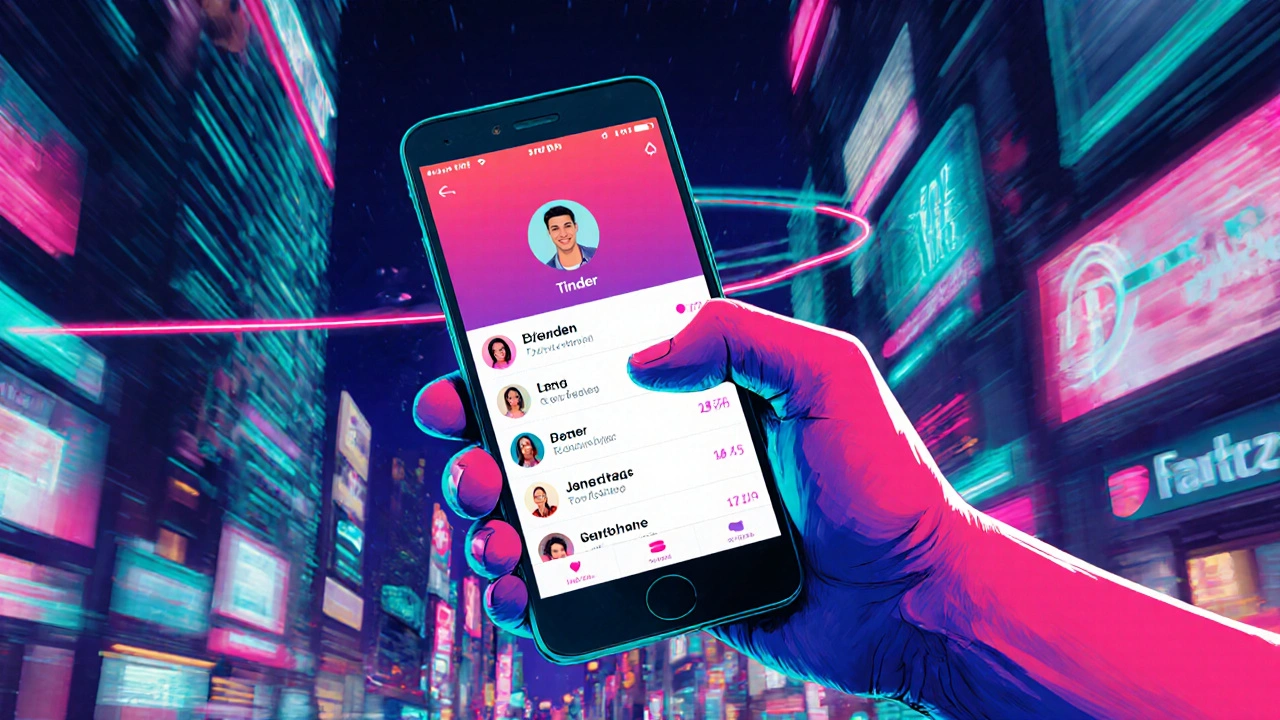Dating App Comparison Tool
Compare Dating Apps
Select apps to compare their key features and user base
Selected Apps Comparison
3 apps selected| App | Primary Match Method | User Base | Unique Feature |
|---|
The rise of online dating has reshaped romance, turning swipes into first dates and algorithms into matchmakers. From clunky chat rooms in the early 2000s to AI‑driven video dates today, the journey reflects how technology rewrites even our most personal habits.
From Chat Rooms to Mobile Matchmaking
Online dating is a digital service that connects people seeking romantic relationships using internet platforms. Early adopters met on sites like Match.com and eHarmony, where lengthy profiles replaced handwritten letters. The goal was simple: expand the dating pool beyond local bars and friends‑of‑friends.
These early platforms relied on keyword searches and manual matching. Users filled out extensive questionnaires, hoping an algorithm could pair them with “the one.” The experience was deliberate but slow, often requiring days or weeks before a match appeared.
Swipe Culture Takes Over
When smartphones became ubiquitous, a new generation of apps introduced the swipe gesture. Tinder is a location‑based dating app that popularized swiping left for “no” and right for “yes.” Its minimalist design turned dating into a game of instant decisions.
Other apps followed suit. Bumble puts women in control by requiring them to send the first message after a match. Hinge markets itself as “designed to be deleted,” focusing on detailed prompts that spark conversation.
This Swipe culture is a social phenomenon where users quickly evaluate potential partners based on photos and brief bios, mirroring the fast‑scroll habits of social media feeds.
Algorithmic Matching and AI
Beyond the surface, modern apps employ sophisticated Algorithmic matching systems. Machine learning models analyze past behavior-likes, messages, and time spent on profiles-to predict compatibility.
Artificial intelligence now curates daily match suggestions, optimizes photo rankings, and even drafts opening lines. For example, some platforms use natural‑language processing to detect user intent and adjust conversation nudges accordingly.
These AI‑driven features reduce decision fatigue and improve match quality, though they also raise concerns about data privacy and bias.
The COVID‑19 Pandemic’s Unexpected Boost
The 2020‑2021 COVID‑19 pandemic forced people indoors, accelerating the shift to digital romance. With lockdowns limiting in‑person interactions, video dates became the norm.
Apps quickly added built‑in video chat, virtual game rooms, and even AI‑generated icebreakers. Users reported higher willingness to explore connections online, leading to a spike in registration numbers across the board.
Video dates also offered a safety net, allowing participants to gauge chemistry before meeting offline, which in turn reduced the incidence of awkward first‑date experiences.

Safety, Privacy, and New Etiquette
As the user base expanded, so did worries about privacy and harassment. Platforms responded with verification badges, AI‑moderated content, and two‑factor authentication.
Issues like Ghosting-the sudden disappearance of a conversational partner-have spurred discussions about digital etiquette. Many apps now provide “read receipt” toggles and gentle nudge notifications to encourage respectful closures.
Privacy concerns center on location tracking and data sharing. Users are increasingly demanding transparent policies and the ability to control what personal information is visible to matches.
Cultural Shifts and Demographic Trends
Millennial and GenZ users approach love differently than previous generations. Surveys show a preference for inclusive gender options, diverse orientation settings, and purpose‑driven matching (e.g., focusing on shared values rather than solely physical attraction).
Regional variations also matter. In North America, casual hook‑ups dominate, while in parts of Europe, long‑term compatibility remains a priority. Apps have begun offering localized features-such as language‑specific prompts or region‑based safety tips-to cater to these nuances.
Future Outlook: What’s Next for Digital Romance?
Looking ahead, several trends promise to shape the next decade of online dating:
- Immersive Experiences: Augmented reality (AR) filters and virtual reality (VR) “speed‑dating” rooms could simulate in‑person chemistry.
- Deeper AI Integration: Predictive mood analysis and sentiment‑aware conversation assistants will further personalize interactions.
- Blockchain Verification: Decentralized identity solutions may offer immutable proof of age and background, enhancing trust.
- Wellness Integration: Apps might incorporate mental‑health check‑ins, aligning romantic pursuits with overall well‑being.
Whatever form it takes, digital matchmaking will remain a mirror of societal values-reflecting how we balance convenience, authenticity, and connection in an ever‑connected world.
Comparison of Leading Dating Apps
| App | Primary Match Method | User Base (2025) | Unique Feature |
|---|---|---|---|
| Tinder | Swipe‑based location matching | 75million monthly active users | SuperLike boost |
| Bumble | Swipe with women‑first messaging | 42million monthly active users | 24‑hour response window |
| Hinge | Prompt‑driven profile matching | 12million monthly active users | Designed to be deleted |
Quick Checklist for Safe & Effective Online Dating
- Verify profiles using in‑app badges or external ID checks.
- Set clear privacy controls - limit location sharing.
- Start with video dates before meeting in person.
- Use AI‑generated icebreakers if you’re stuck.
- Respect boundaries - avoid ghosting; send a courteous goodbye.
Frequently Asked Questions
How have dating apps changed since the early 2000s?
Early platforms relied on detailed questionnaires and manual matching, while modern apps use swipe gestures, AI‑driven recommendations, and video chat features, making the process faster and more interactive.
Is it safe to share my location on dating apps?
Most apps let you control location visibility. Use approximate distance settings, enable two‑factor authentication, and avoid sharing exact coordinates until you trust the person.
What’s the best way to avoid ghosting?
Communicate expectations early, keep conversations balanced, and if you need to end things, send a brief, polite message instead of disappearing.
Can AI really improve my match quality?
AI analyzes your interaction patterns and preferences, offering more relevant matches over time. However, it’s still important to trust your intuition and not rely solely on algorithmic suggestions.
How did COVID‑19 affect online dating habits?
Lockdowns pushed users toward video dates and virtual events, increasing overall app usage by roughly 30% in 2020‑2021. The trend created lasting habits, with many still preferring a video intro before meeting in person.


Written by Michele Bradford
View all posts by: Michele Bradford